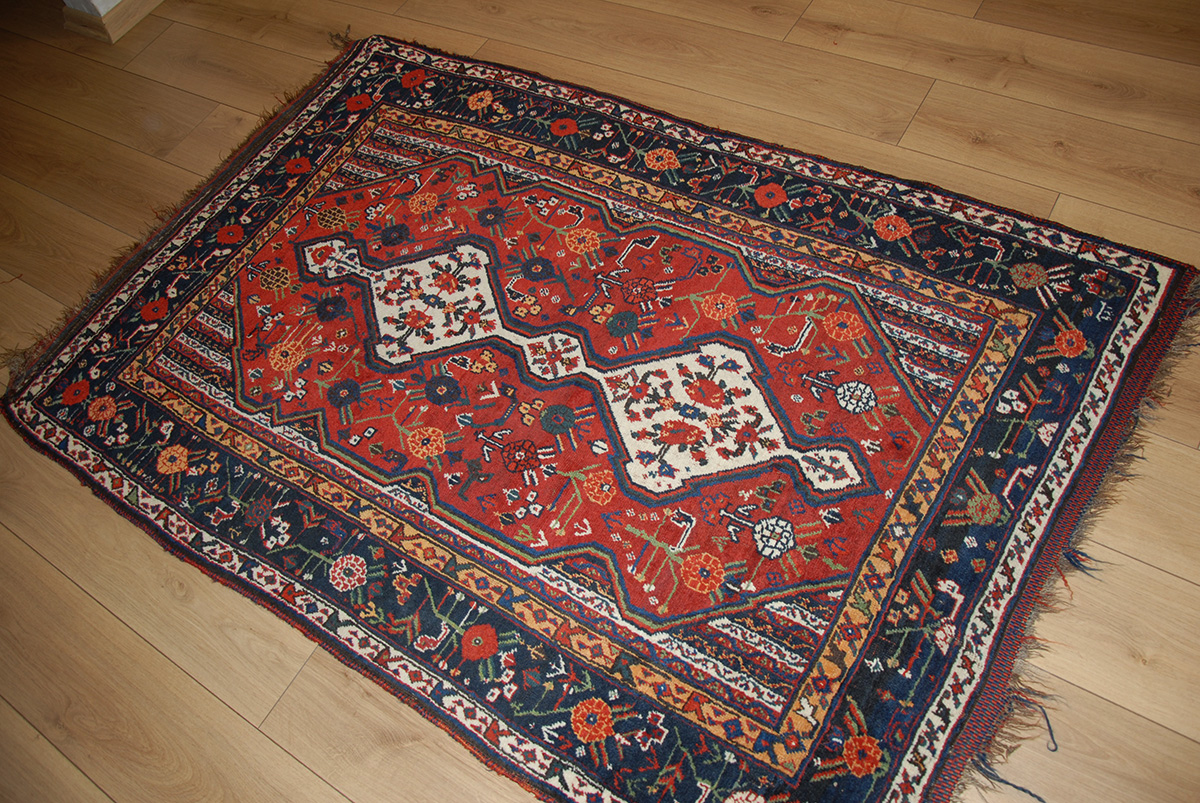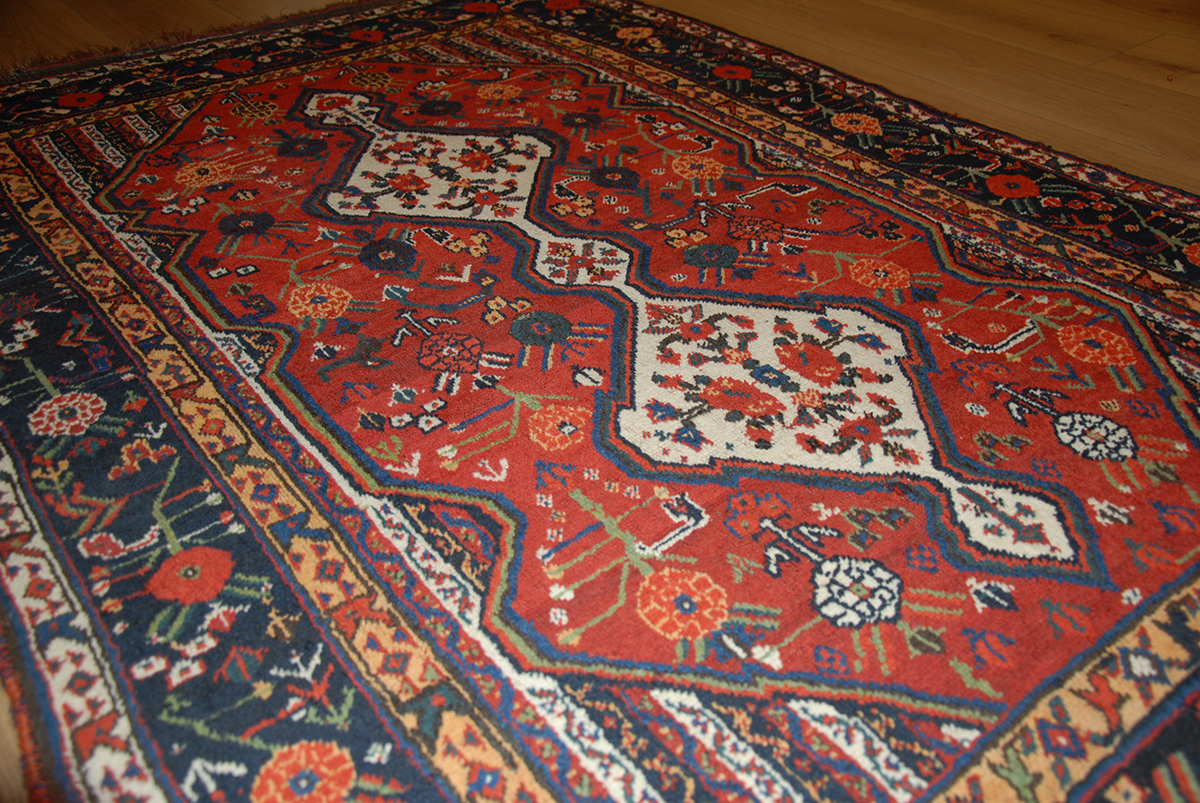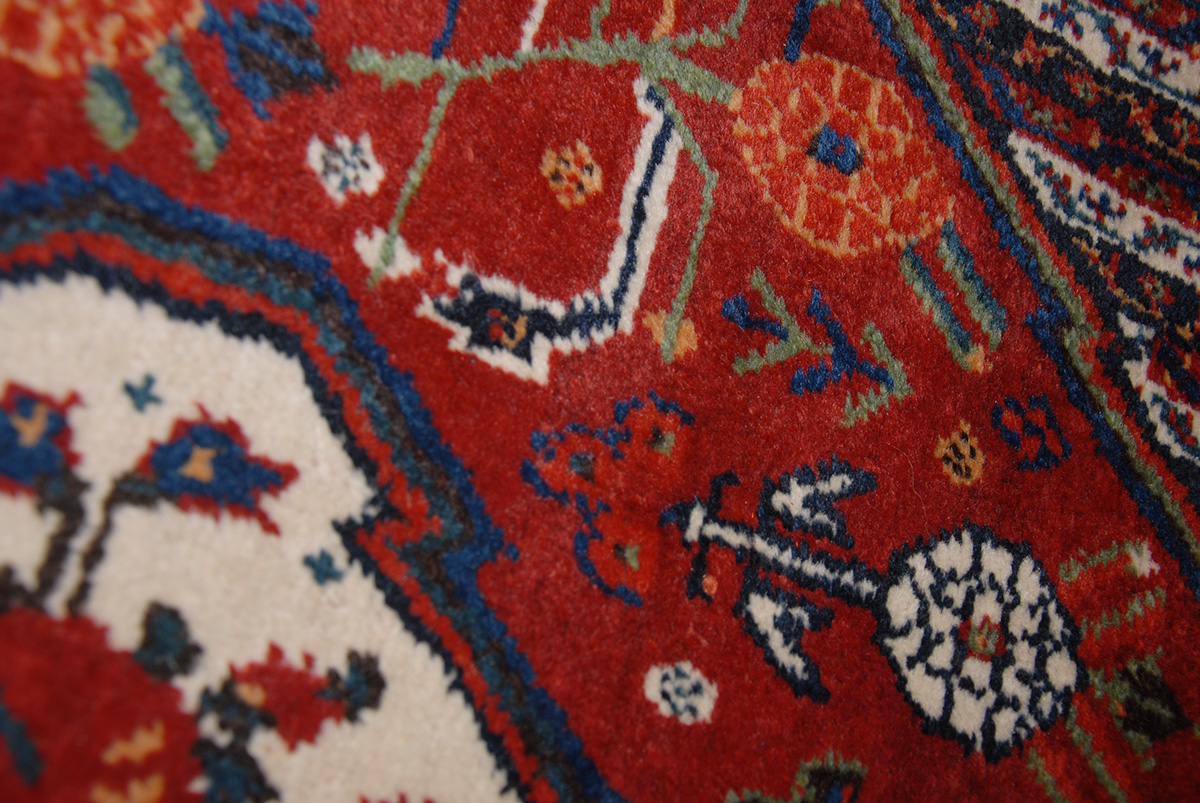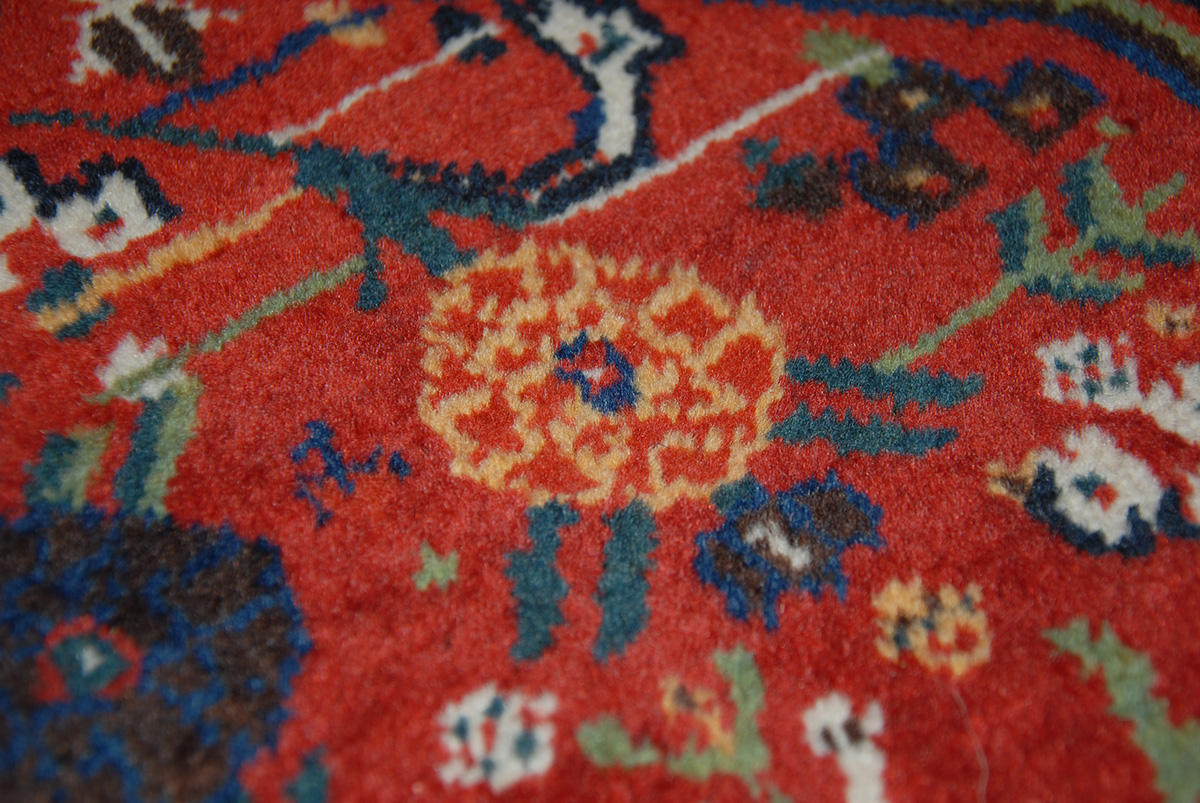
| 0 |
Antique Khamseh rug, circa 1880, Fars Province, the vicinity of
Sure, the Burns fragment seems older than mine, but mine is very likely older than the standard "Konaghend”. (I’d guess mine is midway in age between the Burns frag and the standard 1880ish Konaghends.) In addition to the shared forked “tamga-like” forms, my rug and his also share hooked forms alternating every two medallions, with the a layout of three vertical rows in both rugs of what look like to me as curved medallion-like forms. The Burns field layout is jumbled, like mine is. There’s not enough left of the Burns fragment to know what the borders really looked like, if indeed, there was another border. There must be more of these. Since these “Konaghend” rugs are so highly variable, I’d guess early on, they were woven in different locations - before the “rug boom”, when they became more or less standardized, like the one I sent you a reference for that Udo Langenauer sold in Vienna. What do you think? (So many of these village rug patterns in the Transcaucasus got simplified after about 1860 or so.) I could go out and see Burns’ frag - I’m invited - but it’s a long trip and travel is difficult at this point. Burns is about 90 and does not have his collection up in jpgs, for the most part. For his webinar, he had help to record what he showed. He buys and sells, so he my not have the frag. I will at least ask him about it and see if a friend out there could get more pictures, but most of them are in LA. Burns does not have an interest in structure, and asking him about the frag’s structure would not give me an answer. Do you have any other images of early “Konaghend” rugs? I’ve asked around from the academics I know for design source and evolution feedback and gotten very little. They say, quite rightly, look at early Turkish rug fragments in the TIEM. I’ve already done that. I assume you’ve been there. The academics in the West are not as a group interested in anything but “early” rugs. Having done my own search, there are apparently no more old gold and dark blue similar rugs out there like mine. That says something. Code: AF02M Size: 115x175cm Size (ft): 3'9"x5'8" Structure: wool on wool. Knots: Gördes (Turkish, symmetrical) Description: Good pile, saturated natural colors, no color shades of the late period. A rare design. |
Contact us for more information about this rug




Contact us for more information about this rug
|
For more information about the above rug or to place an order please email
vd@azerbaijanrugs.com |